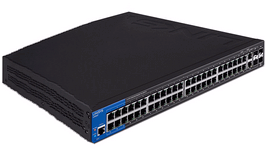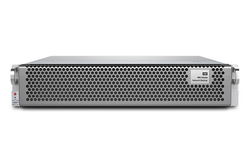The enterprise storage virtualization offers many benefits compared to proprietary hardware solutions. DataCore is a key player, who created and developed the concept in 1998. The DataCore SANsymphony-V application is a great example and its latest version 10 offers new features and features that make storage virtualization a persuasive discipline.
The new features focus heavily on the highest performance possible by the use of Flash. Normally reserved for high-end enterprise disk arrays, SANsymphony-V allows disk activity monitoring and live data migration to improve storage infrastructure performance while allowing the use of heterogeneous vendor devices. The maximum size of the storage cluster supported by SANsymphony extends to 32 nodes and 32 Petabytes. Synchronous mirroring replication also allows up to 100 km distant N + 1 redundant networks.
Upon installation, an intelligent deployment wizard simplifies the transformation of local disk and flash storage on the application servers in an elastic storage pool, using the concept of Virtual SAN. The storage space can also be shared on a server cluster, eliminating the need for an external physical SAN. SANsymphony-V is nevertheless able to unify physical and virtual SAN. The software works on the server side as a virtual SAN and is able to administer the related physical SAN.
An agnostic application for heterogeneous storage
With its independent approach towards the installed storage equipment, SANsymphony-V can use any device or storage resource compatible with the Windows server on which the software is installed. This includes local hard disks, SSDs, SAS storage arrays, SAN and FCoE. This release also supports high-speed 40/56 Gigabit Ethernet interfaces and 16 Gbps Fibre Channel.
Once the software is installed on Windows Server 2012 R2, you can from the management console create a virtual SAN covering local storage and network systems. Before allocating the storage resources, the roles of the ports are set to determine if they are reserved for storage or for dedicated access to the physical disks of the local mirrored node (or several nodes). This feature works in real time. If replication were to fail, the virtual disks are available to provide redundancy throughout for the connected hosts and clients.
View and optimize infrastructure performance
Once the hosts connected to the storage node, they are saved using the console. Physical disks and storage devices are grouped into storage pools, and each pool can contain a heterogeneous mixture of drives and interfaces. When the pool is created the administrator should determine the number of required levels (maximum 15) for each pool. The first level is reserved for the fastest resources, typically SAS drives or SSDs. This arrangement has two benefits : inform the software about the hierarchy of the elements of the storage infrastructure, and activate the auto-tiering feature of SANsymphony-V, which migrates data on the fly from the slow resources to the faster ones in order to optimize the infrastructure’s global performance. The administrator’s dashboard shows the use of the storage resources in graphical form. A visual heat map also indicates the performance of each resource and pool of the infrastructure in realtime, eliminating the tedious work of needing to measure – or guessing – when it comes to having an idea specifies the composition of the storage infrastructure at a given time.
Storage profiles are rule-based to provide automatic data migration. A critical profile instructs the software to maintain the data in the most efficient resources regardless of the access frequency. A Normal profile migrate data blocks through the different levels of the infrastructure according to their use.
Thin provisioning enabled by default
Thin provisioning is applied by default to save actually consumed disk space. SANsymphony-V dynamically allocates disk blocks as soon as they are required. The management of an unlimited number of snapshots for backups allows to return to any point in time in the past. Virtual disks in mirror are easy to create: select a pool on a server, enter a pool from another server and let the software do the rest. In addition, activation of the CDP function (Continuous Data Protection) creates a history log file for each virtual disk which can be reviewed at any time from activation.
SANsymphony features a particularly innovative cache function, since it uses the server memory – up to 1TB – to optimize writes to the disks. This function buffers write requests, improving performance of the same infrastructure, especially if it consists mainly of mechanical disks. Read requests and random writes are grouped to reduce latency, immediately releasing the targeted resources.
In conclusion, SANsymphony v10 makes storage defined extremely simple to understand and to deploy for companies looking for a way to manage and provision their heterogeneous storage. With this version of DataCore has dramatically improved the scalability and availability of data prioritization and the display of storage resources according to their performance makes optimizing the storage infrastructure of business readily accessible.
More around this topic...
In the same section
© HPC Today 2024 - All rights reserved.
Thank you for reading HPC Today.

































